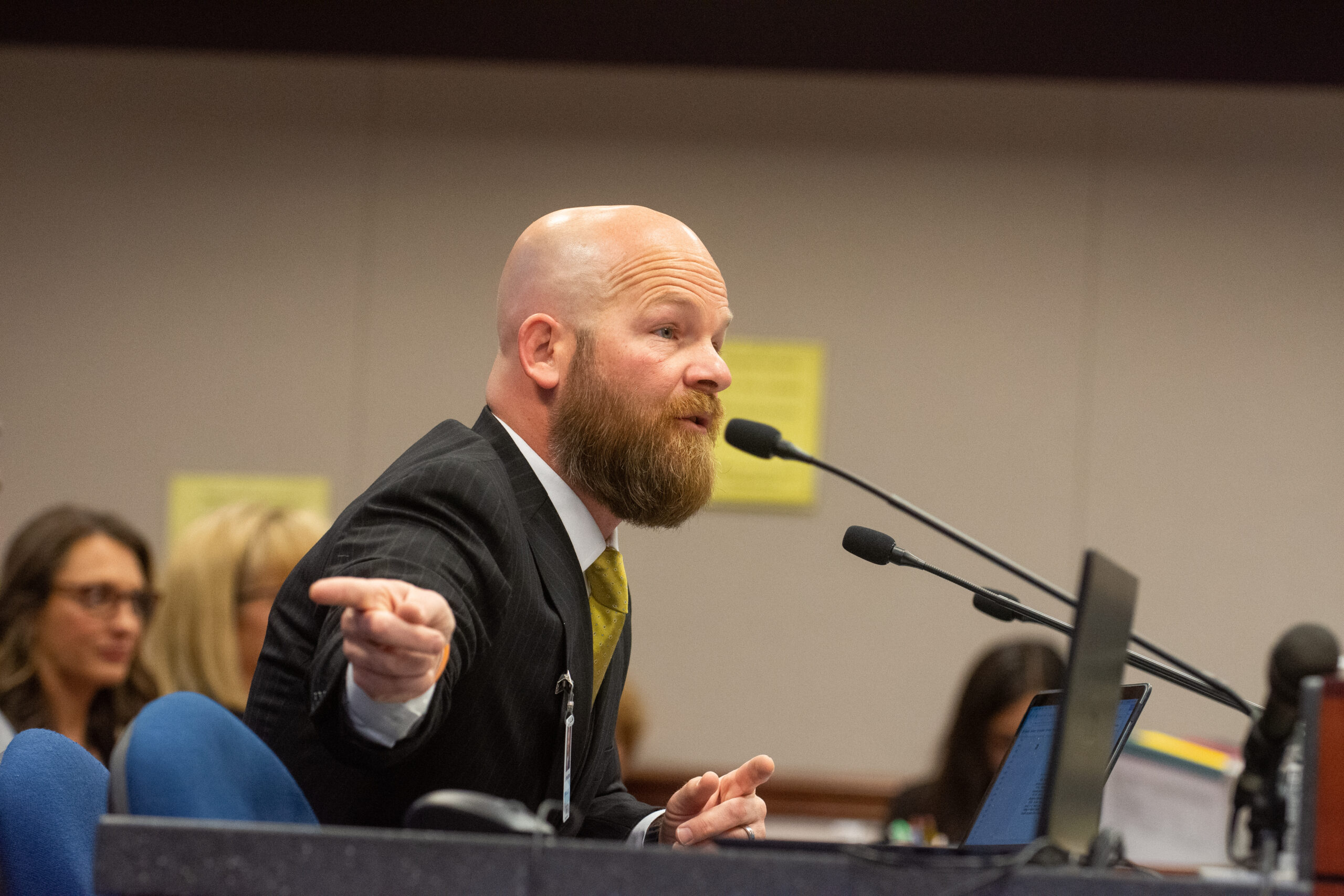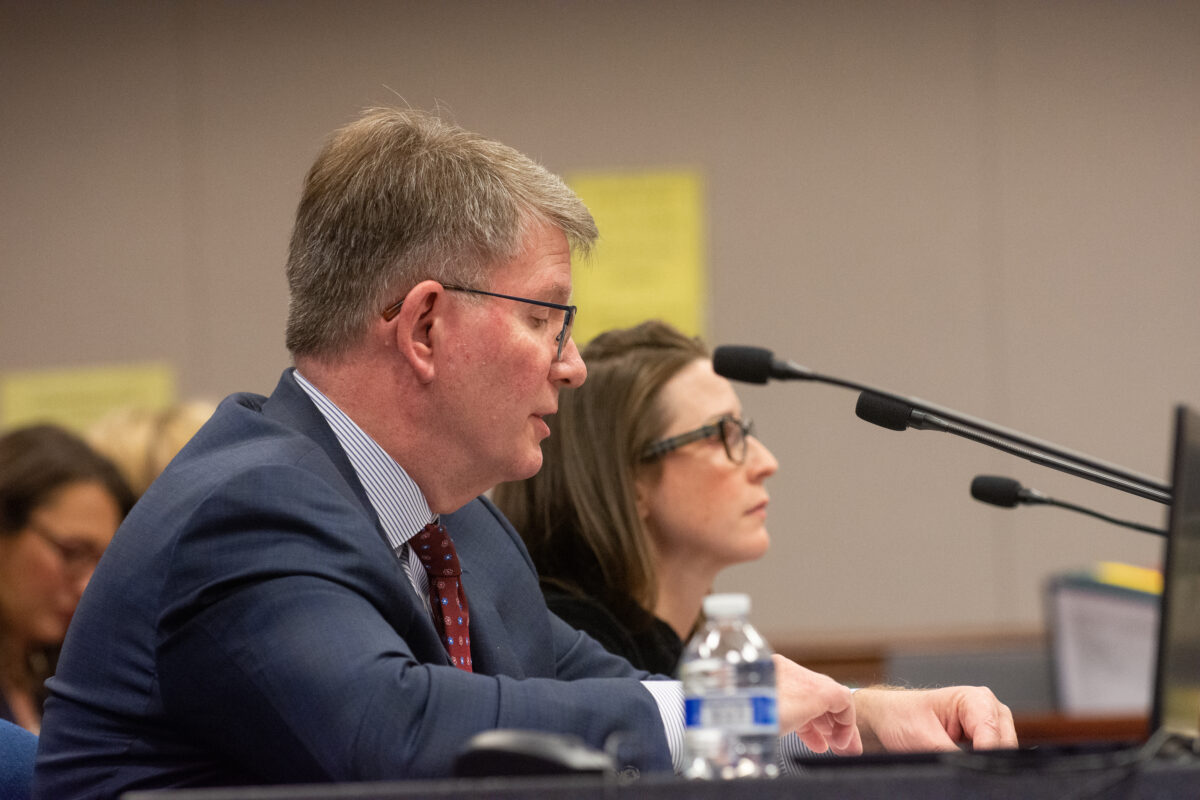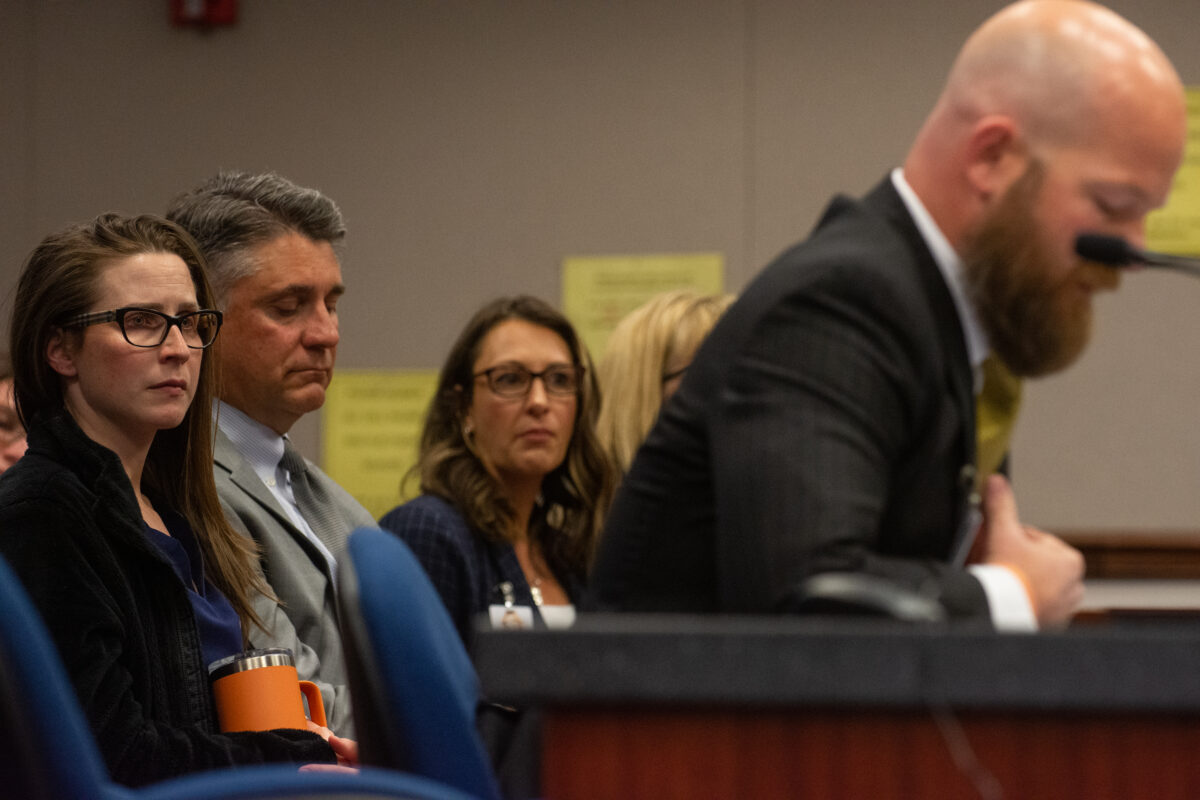Doctors, trial lawyers still at odds over raising cap on malpractice damages

Despite overtures toward compromise, health care providers still sharply criticized a trial lawyer-backed bill to significantly raise a cap on how much money people can win in lawsuits alleging medical malpractice during a hearing on the measure Tuesday.
AB404, which proposes increasing that cap on damages for pain and suffering from $350,000 to $2.5 million, represents a compromise for the Nevada Justice Association, a trade organization of trial attorneys that supported eliminating the cap entirely. But the group remains at odds with Nevada doctors and health care providers, who are concerned that raising the cap would harm the state’s ability to recruit and retain physicians at a time when the state already struggles with a shortage of providers.
“Before you pass or amend AB404, please study and understand the negative impacts on health care providers, and the windfall for lawyers,” said Patrick Kelly, the president and CEO of the Nevada Hospital Association, who pointed to the possibility for lawyers to earn significantly more in fees under the increased cap.
Supporters of the bill have argued that raising the cap is necessary to bring justice for patients who have been inadequately compensated for life-altering medical injuries leading to failed reproductive functioning, irreversible harm and even death in some cases.
Though bill presenter Justin Watkins, a trial lawyer and former Assemblyman representing the Nevada Justice Association, said during the Tuesday hearing that opposition had not reached out to him about an amendment, Assembly Speaker Steve Yeager (D-Las Vegas) indicated in an interview last week that all stakeholders will have to work together to find a compromise.
“It’s a question of, do you want lasting peace on this issue, or do you want a bill every single session on this?” Yeager said at the time.
Watkins is a managing partner at Battle Born Injury Lawyers, where Yeager is also a partner, and he is a member of the Nevada Justice Association’s legislative committee on medical malpractice.
Still, opponents indicated little willingness to compromise on an issue they characterized as potentially exacerbating the state’s health care provider shortage, raising concerns that increasing the cap on damages would come at a time when Medicaid reimbursement rates have barely risen over the last 40 years and threatening pay rates for employees.

AB404 was the only one of two controversial medical malpractice bills that survived legislative deadlines. As proposed, the bill would raise the state’s cap on noneconomic damages in medical malpractice lawsuits — also referred to as “pain and suffering” damages that are separate from lost wages and future medical costs. Two dozen states have no caps at all.
The other bill, AB209, would have eliminated the cap entirely. It failed to advance past the Legislature’s first committee passage deadline after receiving an initial hearing last month.
The failure of that measure comes in a more than 20-year battle between trial lawyers and doctors surrounding the caps. The existing medical malpractice cap of $350,000 on noneconomic damages is the product of a costly 2004 ballot initiative.
Alongside raising the cap, the bill would extend the time allotted to a victim of medical malpractice to bring forward a civil lawsuit from three years after the date of injury to four years, and from one year after the injury was discovered or should have been discovered to two years after such a date. Unlike AB209, AB404 would not require doctors to carry liability insurance of at least $1 million and up to $3 million.
Watkins said he had heard criticisms of the bill, but not suggestions from the opposition about where the two sides could settle on a compromise.
“Nobody has come to me with an amendment to this bill of any kind, of any provision,” he said.
Watkins said he believed a full repeal of the cap would be best for Nevadans, but added that legislation has to “balance between policy, politics and practicality.” He instead framed the proposed $2.5 million cap as a modernization, noting that the existing cap, if adjusted only for inflation, would be set between $550,000 and $600,000.
“Raising the caps in line with inflation is an endorsement of failed policies from 2004,” Watkins said. “As a result of the caps in 2004, we have the lowest standard of care in the United States, we have among the fewest doctors per capita in the United States and we have an insurance industry that is averaging profit margins across the last 15 years in excess of 40 percent. They have privatized profits and socialized losses.”
Both Watkins and opponents of the bill also pointed to other ways of addressing the provider shortage, including raising Medicaid reimbursement rates and expanding higher education pathways to the health care field.
Watkins also highlighted examples of states that raised their cap on noneconomic damages, including California and New Mexico. Watkins said California last year raised their cap on damages from $250,000 to $1 million — a process that would take place over the course of a 10-year period. He added that Iowa raised their caps immediately this year from $250,000 to a bifurcated cap of $2 million for hospitals and $1 million for independent physicians, and he said there were no issues with implementation of higher caps in other states, such as Nebraska’s increase to $2.25 million in 2014.
Opposition to the measure argued that raising the caps could drive more medical practitioners out of the state.
“Raising caps on noneconomic damages is what the lawyers want, not what the patients want,” said Aiden Gould, an emergency medicine physician based in Reno. “It will not encourage better medicine. Patients want a pediatric neurosurgeon to see their child with newly diagnosed brain cancer immediately, without having to drive to another state to get care.”
Iolanda Edsall, a Reno-based OB-GYN, said medical malpractice premiums are set by two factors: specialty and geographic location. The higher the risk of the speciality, the higher the costs, she said, noting that raising the caps will “undoubtedly” increase the frequency of medical malpractice lawsuits. Rising insurance rates in the early 2000s hit Clark County-based OB-GYNs particularly hard.
Edsall said the change could lead to lower starting pay for practitioners and put providers such as her in the position of declining to take insurance that offers lower reimbursements, affecting vulnerable patients.
“When someone brings a case against us, we're faced with a very difficult dilemma of do we settle or do we go to trial?” she said. “We may feel we practiced [the] standard of care, we may feel that we have a strong case. We also feel that settling is an admission of error and fault. But we have to weigh that against the risk of going to trial and getting a judgment against us that exceeds our policy limits and putting all of our personal assets at risk.”

Despite saying he had seen no signs of a possible compromise during the hearing, Watkins offered a proposal for finding a middle ground with opponents, such as a bifurcated cap similar to the one used in Iowa that would include a higher cap for hospitals and lower cap for doctors.
Yeager told The Nevada Independent last week that discussions are ongoing about the cap on damages and there’s no agreement yet. However, he noted that most stakeholders acknowledge that there should be some increase based on inflation and amid “heart wrenching” pleas for help from victims of medical malpractice.
Yeager said the issue of medical malpractice reminds him of a construction defect compromise that came during a 2019 session — a deal where no one was entirely happy with the compromise but sufficient enough of a solution that the Legislature has not had to navigate the issue since.
“My hope for medical malpractice is it works in much the same way,” Yeager said. “That both sides are able to give and take so that we don’t have to take up this bill and this issue every single session and we can move on.”

